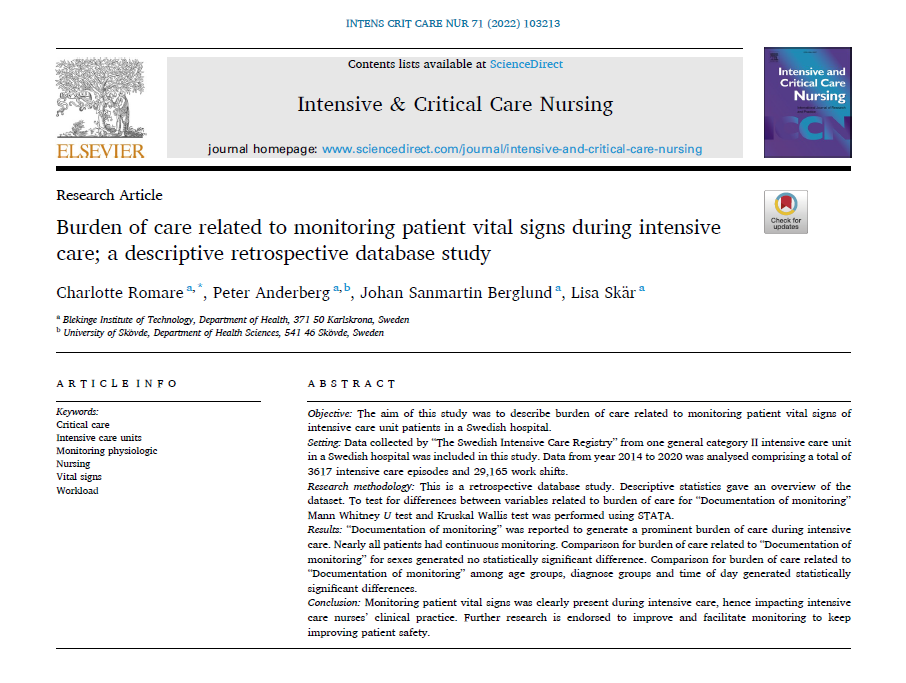- Home/
- Publications/
- Burden of care related to monitoring patient vital signs during intensive care; a descriptive retrospective database study

Burden of care related to monitoring patient vital signs during intensive care; a descriptive retrospective database study
- Post by: charlotteromare
- 1 January, 2022
- No Comment
Read on DOI
Tagged: Burden of care, Charlotte Romare, Intensive care units, Johan Sanmartin Berglund, Lisa Skär, Monitoring physiologic, nursing, Peter Anderberg, SIR, Swedich intensive care registry, vital signs, workload

